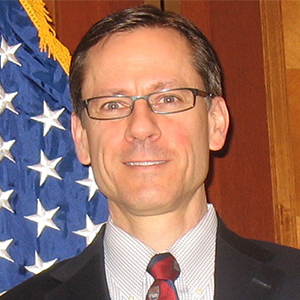The talk begins with an overview of modern-day digital arrays from a national and international perspective. The move is towards element-level digital beam forming architectures which has driven future sensors to incorporate large numbers of digital data streams with large aggregate data rates. Supporting this trend, recent test results from the DARPA Beyond Linear Processing (BliP) program are discussed. This is followed by an update a new near-field scanner and Horus-D, which is an S-band, polarimetric phased array radar, which is being designed and built at the University of Oklahoma’s Advanced Radar Research Center (ARRC). It provides optimum radar flexibility given that it is digital at every element and that it supports arbitrary polarization.

Dr. Mark Yeary,
University of Oklahoma
Finally, the best way to increase throughput for signal processing is to use heterogeneous computing, which is a method of combining different types of processors to gain performance. Some examples of processors include multicore CPUs, FPGAs, GPUs, ASICs, and DSPs. A brief overview of our planning for on CPUs and FPGAs is discussed.
Mark Yeary received his Ph.D. from the Department of Electrical Engineering, Texas A&M University, College Station, TX in 1999, and since fall 2002, he has been with the School of Electrical & Computer Engineering at the University of Oklahoma (OU), Norman, where he was named the endowed Hudson-Torchmark Presidential Professor in 2011. In 2022, he was awarded OU’s George Lynn Cross Research Professorship and named the Gallogy Chair Professorship within OU’s Gallogly College of Engineering. As of 2005, he is a founding member of the Advanced Radar Research Center (ARRC), which is now the largest university-based radar center in the nation.
His research interests are in the areas of digital signal processing and radar systems with an emphasis on hardware prototype development. For instance, he was deeply involved in the National Weather Radar Testbed (2003-2016 based on Navy SPY-1), the ARRC’s Atmospheric Imaging Radar program, and the ARRC’s all-digital radar Horus program. He has served as a PI or Co-PI on grants from ONR, NASA, NSF, NOAA, DARPA, and etc. In 2012 and 2013, he was with the MIT Lincoln Laboratory, Lexington, MA,
USA, on sabbatical.